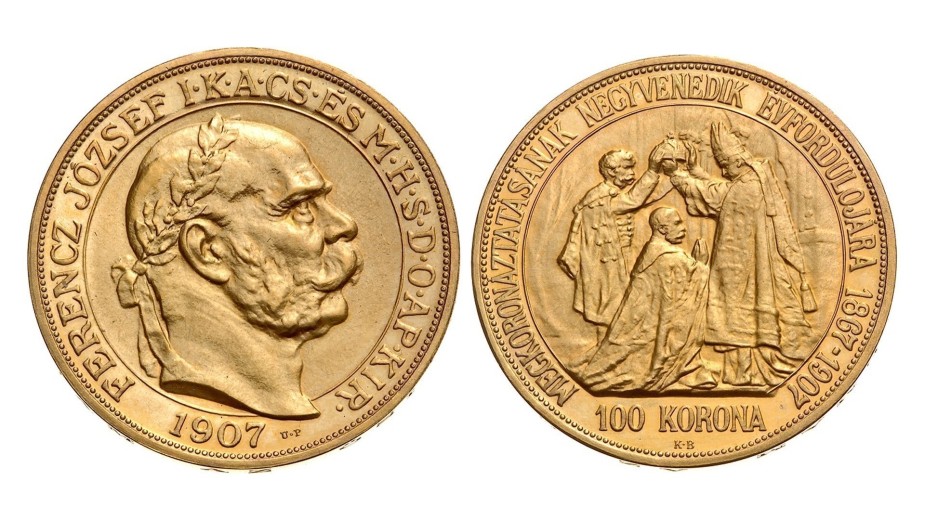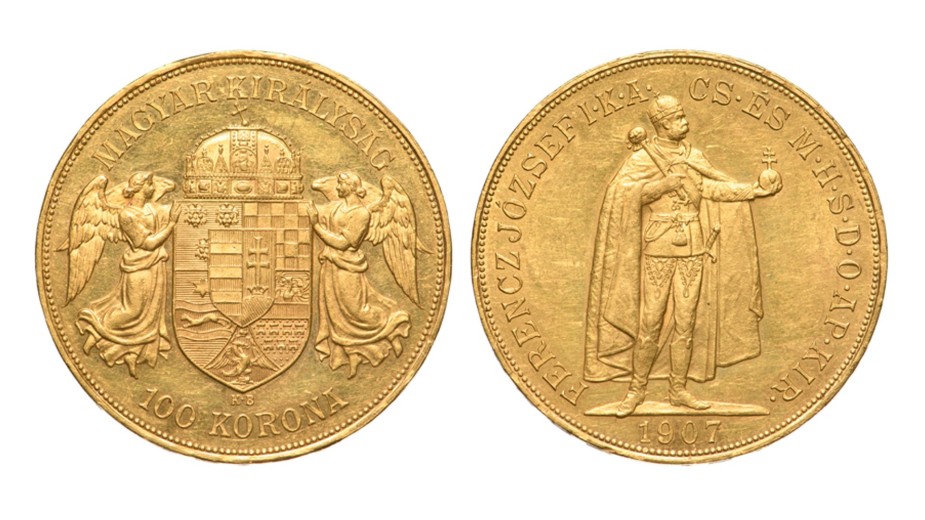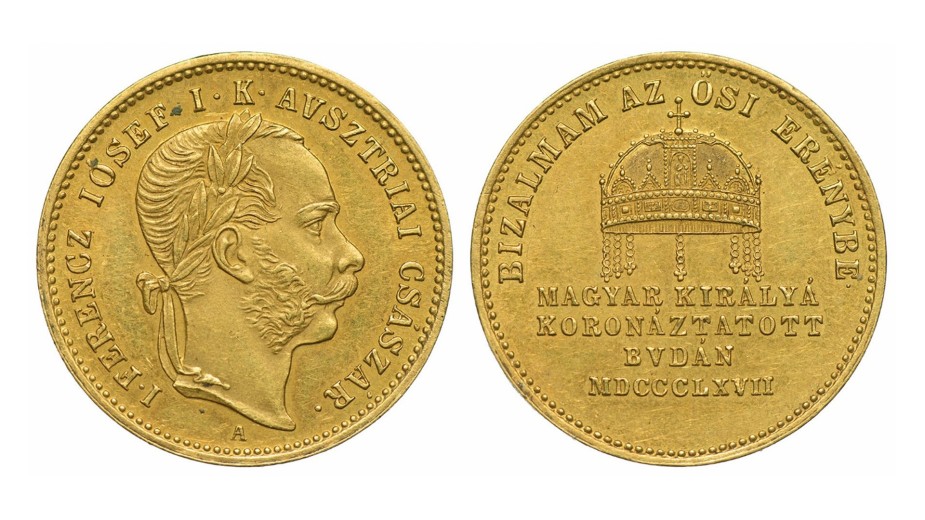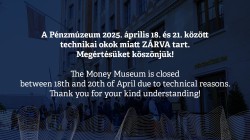
On the 8th of June in 1867, our longest reigning king, Franz Joseph who ruled for 68 years, was crowned, and his Hungarian-language motto, "With united forces", became the edge letter of the higher denomination Hungarian coins.
Franz Joseph ascended to the throne on the 2nd of December in 1848, at the age of 18, but his coronation as King of Hungary took a long time, partly because of the 1848-49 Revolution and War of Independence and the retributions that followed. This took place on the 8th of June in 1867, when Elizabeth was crowned along with him in the Church of Our Lady of the Assumption (known as Matthias temple nowadays) in Buda Castle. It was then that the Austro-Hungarian Monarchy was born, and with it Franz Joseph's Hungarian-language motto, which became the writing on the edges of the higher denomination Hungarian coins (the Austrian mintmarks bear the words MIT VEREINIGTEN KRAEFTEN, or “With united forces”).
40th anniversary of the reign of Franz Joseph
On the 40th anniversary of the coronation, in 1907, an article of law provided for a new supplementary treaty to the treaty on the coinage and monetary system. A new denomination, the 100 gold crown, the highest denomination of all metallic coins, and a silver version the 5 crown, were introduced.

One type of coin had the same design as the 10 and 20 crowns. The obverse of the jubilee type is similar, but not identical, to the 1 and 2 silver crowns: a laurel-crowned portrait of the monarch facing sideways, the inscription FERENCZ JÓZSEF I. K. A. CS. ÉS M. H. S. D. O. AP. KIR., i.e. Franz Joseph by the Grace of God, Emperor of Austria and Apostolic King of Hungary, Croatia, Slavonia and Dalmatia, and the year of minting. The reverse, however, is entirely new. Within a circle of pearls, the coronation scene as captured by Bertalan Székely and Ferenc Kolarz, respectively, in the circulars for the FOURTH ANNIVERSARY OF HIS CORONATION 1867 - 1907: the monarch kneels on the steps in his coronation robes, Gyula Andrássy in his Hungarian regalia on his left, János Simor in his regalia on his right, holding the crown in his hands. The scene captured the moment when the crown was being placed on Franz Joseph's head. The altar and the arches of the church are visible in the background on the right. At the bottom of the section is the 100 KORONA mark horizontally, with the K.B. (= Körmöcbánya) mintmark below it. Edge lettering: CONFIDENCE IN ANCIENT EXPERIENCE, followed by a four-part design. Parts of the surface are matted.

The identity of the designer is unknown
It is interesting to note that the identity of the designer of one of the most beautiful Hungarian coins of modern times is uncertain. The other metal coins of the crown series were designed by Károly Gerl (Karl Gerl) and József Reisner (Josef Reisner), who were engravers and designers from Körmöcbánya. It can be assumed that Gerl and/or Reisner were responsible for the new denominations, but no credible contemporary sources have survived. The articles of the time even quote the Finance Minister's decree verbatim, but do not mention the name of the designer.

Less than 10,000 of the 100-crown coins and 300,000 of the 5-crown coins were minted. The gold coins were issued by the Hungarian Royal Mint, the 5 crowns by the main institution of the Austro-Hungarian Bank in Budapest and the provincial branches. Although they were hardly used in circulation, they were legal tender. Crown gold coins could also be minted by private individuals if they provided the necessary quantities of precious metals and gold. "Such gold coins could also be minted for the account of private individuals, if the royal mint was not busy minting for the state. The amount of the mintage to be charged to private individuals shall be determined by decree", the law provided. They were officially withdrawn from circulation on the 1st of January in 1927 with the introduction of the pengő, together with the other members of the crown series.
The jubilee crownings were also loved by posterity. In the mid-1960s, gold was mainly used to mint coinage for foreign exchange.
Further news
All newsOur company has been selected as a finalist in three separate categories of the Industry Eagles Awards
Thank you for your kind understanding!
The Money Museum has been nominated for the Museum of the Year 2025 award by the Pulszky Society - Hungarian Museum Association jury.
Vote for the Money Museum and the Money Museum Panoramic Terrace!
Our company has been selected as a finalist in three separate categories of the Industry Eagles Awards
Thank you for your kind understanding!
The Money Museum has been nominated for the Museum of the Year 2025 award by the Pulszky Society - Hungarian Museum Association jury.
Vote for the Money Museum and the Money Museum Panoramic Terrace!



